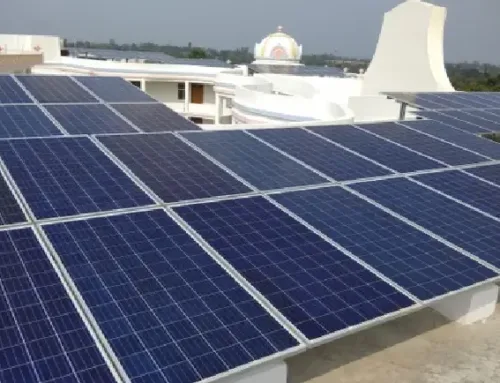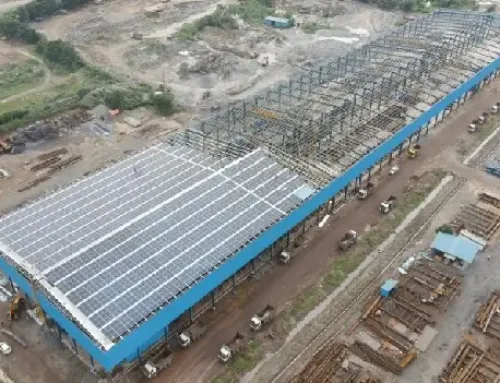
Monocrystalline Solar Panels
When it comes to switching to solar energy, there are almost unlimited possibilities. This is especially true when deciding what sort of solar panels to install. You should choose between monocrystalline and polycrystalline solar panels.
Let this article be your guide in determining the monocrystalline solar panels along with the differences between monocrystalline vs polycrystalline solar panels. This article will help you make an informed decision, as well as a quick and easy switch to solar.
In this article, we will cover written below topics
- What are Monocrystalline Solar Panels?
- How do Monocrystalline Solar Panels work?
- Monocrystalline vs. Polycrystalline Solar Panels
What are Monocrystalline Solar Panels?
In today’s market, monocrystalline solar panels are typically regarded as premium products. These panels’ solar cells are manufactured from a single silicon crystal.
To make these solar cells, silicon is first sliced into thin wafers before being shaped into bars. Because monocrystalline solar cells are made up of a single crystal of silicon, electron-hole recombination occurs more efficiently inside the semiconductor material than in polycrystalline solar cells, resulting in higher efficiency (18% -23%) as compared to polycrystalline solar panels.
These panels are black and have a good level of homogeneity. Monocrystalline panels are slightly more expensive than polycrystalline panels, however, the price difference between the two is narrowing in India. Monocrystalline panels with higher efficiency can produce more electricity per square foot.
These panels often have a nameplate capacity of 370Wp-380Wp or more, which increases system capacity in areas where rooftop space is limited. Furthermore, monocrystalline solar moduels can withstand more heat than polycrystalline solar panels (up to a certain temperature, beyond that performance goes down).
How do Monocrystalline Solar Panels work?
When sunlight strikes a monocrystalline solar panel, the cells absorb the energy and form an electric field through a sophisticated process. This electric field generates power by combining voltage and current, as defined by the equation
P (power) = V (voltage) x I (current).
This energy can be used to power direct current devices directly (DC). An inverter can also convert this power to alternating current (AC).
Monocrystalline vs. Polycrystalline Solar Panels
It’s critical to realize that monocrystalline and polycrystalline solar panels work in the same way on a fundamental level. Both monocrystalline and polycrystalline solar panels perform the same purpose in a solar panel system: they collect solar energy and convert it to electricity. They’re also made of silicon, which is commonly used in solar panels because it’s a cheap and durable material.
While both monocrystalline and polycrystalline solar panels might be good choices for your home, there are a few key distinctions to be aware of before making a solar purchase.
The fundamental difference in the manufacturing of the solar cells for these panels accounts for the discrepancies in efficiency and output. Monocrystalline solar moduels use a single silicon crystal, whereas polycrystalline solar panels use many silicon bits melted together.
The following are some of the significant differences between these two types of solar panels:
Cost Factor
Monocrystalline solar panels outperform polycrystalline solar panels in terms of production costs and selling price. Because each solar cell in a monocrystalline solar panel is made up of a single silicone piece, the production method becomes standard, and costs rise.
Energy Efficiency Factor
While monocrystalline solar panels are more expensive, they are the most energy-efficient. When compared to a similar-sized polycrystalline solar panel, their single-crystal, homogeneous structure offers more room for conducting electrons to flow and so generates more electricity.
Space Factor
Because monocrystalline solar modules have more efficient cell components than polycrystalline solar panels, the number of cells or panels required to create the same quantity of energy is also reduced.
| Parameters | Monocrystalline Solar Panels | Polycrystalline Solar Panels |
|---|---|---|
| Panel Cost | High | Moderate |
| Efficiency | High | Moderate |
| Temperature | High | Low |
| Coefficient | High | Bluish |
| Appearance | Blackish | Low, up to 340 Watts (mostly). however, a few OEMs are Manufacturing high wattage Polycrystalline Solar Panels |
| Power Output | High, up to 540 Watts | Occupies more area to achieve a certain capacity compared to monocrystalline panels |
| Rooftop Space | Occupies less area to achieve a certain capacity |
How Can We Help?
Hope this information about “Monocrystalline Solar Panels” helps you.
If you are planning to start a solar business or install a solar solution, you can connect with Ornate Solar to get the best assistance with the best prices for solar panels. We are the official partner of Canadian Solar panels & Renewsys solar panels in India.
For more information, please give us a call at 011 4353 6666.











Leave A Comment